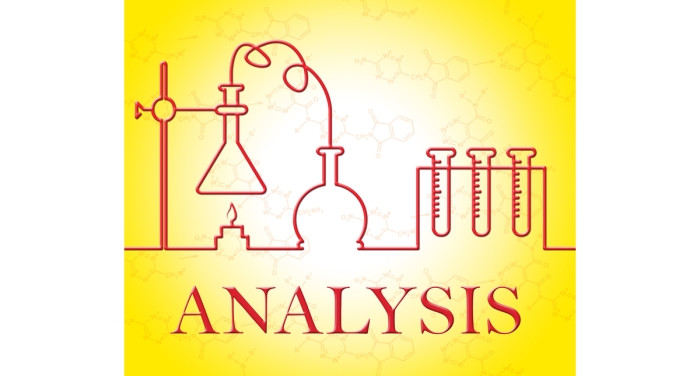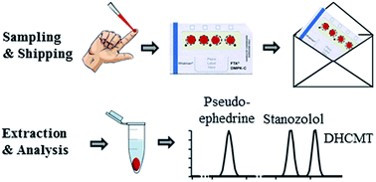Dried Blood Spots (DBS) in Doping Controls

Blutstropfenanalytik bei Dopingkontrollen
Mit der Blutstropfenanalytik (Dried Blood Spots, DBS) werden neue innovative Möglichkeiten im Bereich der Dopinganalytik eröffnet.
Die DBS-Technik ist für viele Bereiche von klinischen Untersuchungen von Interesse wie Arzneimittelentwicklung, Arzneimittel- und Krankheitsüberwachung (s.a. DBS in clinical chemistry). Im Gegensatz zu gängigen intravenösen Blutabnahmen beschränkt sich die DBS-Technik auf eine minimale invasive Blutabnahme in der Regel von nur 20 Mikrolitern aus der Fingerbeere.
Seit 2011 werden vom Institut für Biochemie der Deutschen Sporthochschule Köln und dem Zentrum für Präventive Dopingforschung regelmäßig Publikationen zur Blutstropfentechnik im Bereich der Dopinganalytik publiziert (s.Literatur).
siehe Beitrag Deutschlandfunk (15.1.2015)
siehe Stellungnahme der Welt Anti-Doping Agentur (3.Okt.2019)
Übersichtsartikel
- Dried-Blood-Spot (DBS): Effiziente Dopinganalytik per automatisierter Dried-Blood-Spot-Analyse.
- Abstract
Für den Nachweis illegaler leistungssteigender Substanzen genügen dem Zentrum für Präventive Dopingforschung (ZePräDo) an der Sporthochschule in Köln wenige getrocknete Blutstropfen. Mit einem automatisierten Dried-Blood-Spot-LC/HRMS-System bestimmt das der WADA angeschlossene Labor niedermolekulare Peptidhormone und andere Dopingmittel.
_________________________________________
- Tretzel L, Thomas A, Geyer H, Pop V, Schanzer W, Thevis M. Dried blood spots (DBS) in doping controls: a complementary matrix for improved in- and out-of-competition sports drug testing strategies. Anal. Methods, 2015, 7, 7596–7605
- Abstract
A drop of whole blood dried on filter paper (Dried Blood Spots, DBS) represents an aspiring technique for minimally invasive sample collection in a multitude of analytical disciplines, e.g., therapeutic drug monitoring, preclinical drug development and diagnostic analysis of metabolic disorders in newborns. DBS sampling is characterized by cost-effectiveness, straightforwardness, robustness and facilitated storage and shipment conditions. The present investigation was conducted to highlight the opportunities arising from the implementation of DBS as a complementary matrix in doping control programs. Being frequently abused, three model compounds were chosen to represent the classes of anabolic agents (stanozolol and dehydrochloromethyltestosterone) and stimulants (pseudoephedrine). A quantitative method was developed and validated for the detection of the target analytes from DBS using liquid chromatography coupled to high resolution/high accuracy tandem mass spectrometry. The imprecision of the assay amounted to <8% for intraday and <18% for day-to-day measurements. Highly purified DBS sample extracts exhibited no ion suppression effects due to interfering matrix components and provided limits of detection of 20 pg mL−1 for stanozolol and 0.8 ng mL−1 for DHCMT and pseudoephedrine, respectively, notwithstanding an overall recovery of 26%. Deuterium-labeled internal standards were used to yield reliable quantitative results (accuracy 84–125%). The stability of the analytes was shown for at least 28 days at room temperature. The proof-of-principle for the method presented was substantiated by means of the analysis of authentic specimens obtained from administration studies with stanozolol, DHCMT and pseudoephedrine. The results provided, to the best of our knowledge, unprecedented detection windows for the tested anabolic agents accomplished by DBS sampling to support out-of-competition control efforts for the tested anabolic agents. Furthermore, the unambiguous proof of pharmacologically relevant blood concentrations at given urinary analyte levels is noteworthy for the improvement of in-competition controls, e.g., with regard to stimulant analysis.

Literatur zu Dried Blood Spots
(Zentrum für Präventive Dopingforschung der DSHS Köln)
Brockbals L, Thomas A, Schneider TD, Kraemer T, Steuer AE, Thevis M. Do dried blood spots have the potential to support result management processes in routine sports drug testing?-Part 3: LC-MS/MS-based peptide analysis for dried blood spot sampling time point estimation. Drug Test Anal. 2023 Feb 24. doi: 10.1002/dta.3463. Epub ahead of print. PMID: 36829300.
download the article
M. Thevis, Katja Walpurgis & A. Thomas (2022): DropWise: current role and future perspectives of dried blood spots (DBS), blood microsampling, and their analysis in sports drug testing. Crit Rev Clin Lab Sci. 2022 Aug 7:1-22. doi: 10.1080/10408363.2022.2103085.
Abstract
Thevis M, Kuuranne T, Thomas A, Geyer H. Do dried blood spots have the potential to support result management processes in routine sports drug testing? - Part 2: Proactive sampling for follow-up investigations concerning atypical or adverse analytical findings. Drug Test Anal. 2021;1–5.
download the article
Thevis M, Kuuranne T, Dib J, Thomas A, Geyer H. Do dried blood spots (DBS) have the potential to support result management processes in routine sports drug testing? Drug Test Anal. 2020;12:704–710.
download the article
Lange T, Thomas A, Walpurgis K, Thevis M. Fully automated dried blood spot sample preparation enables the detection of lower molecular mass peptide and non-peptide doping agents by means of LC-HRMS. Anal Bioanal Chem. 2020 Apr 16. doi: 10.1007/s00216-020-02634-4. [Epub ahead of print]
download the article
Lange T, Walpurgis K, Thomas A, Geyer H, Thevis M: Development of two complementary LC-HRMS methods for analyzing sotatercept in dried blood spots for doping controls Bioanalysis. 2019 May;11(10):923-940.
Dib, J. Tretzel, L. Piper, T. Lagojda, A. Kuehne, D. Schänzer, W. Thevis, M: Screening for adiponectin receptor agonists and their metabolites in urine and dried blood spots. Clim Mass Spec, 2017, 13-20.
Thomas A, Thevis M: Analysis of insulin and insulin analogs from dried blood spots by means of liquid chromatography-high resolution mass spectrometry. Drug Test Anal. 2018 Nov;10(11-12):1761-1768.
L. Tretzel, C. Görgens, H. Geyer, A. Thomas, J. Dib, S. Guddat, V. Pop, W. Schänzer, M. Thevis. Analyses of Meldonium (Mildronate) from Blood, Dried Blood Spots (DBS), and Urine Suggest Drug Incorporation into Erythrocytes. Int J Sports Med. 2016 Jun;37(6):500-2.
Tretzel L, Thomas A, Geyer H, Pop V, Schanzer W, Thevis M: Dried blood spots (DBS) in doping controls: a complementary matrix for improved in- and out-of-competition sports drug testing strategies. Anal. Methods, 2015, 7, 7596–7605.
Tretzel L, Thomas A, Geyer H, Delahaut P, Schänzer W, Thevis M. Determination of Synacthen® in dried blood spots for doping control analysis using liquid chromatography tandem mass spectrometry. Anal Bioanal Chem. 2015 Jun;407(16):4709-20.
Tretzel L, Thomas A, Sköld K, Zeeberg D, Schänzer W, Thevis M: Improvement of the stability of Synacthen® in Dried Blood Spots by means of heat stabilization. In: Schänzer W, Thevis M, Geyer H, Mareck U (eds.) Recent advances in doping analysis (23). Sportverlag Strauß, Köln (2015) 126-129.
Höppner S, Delahaut P, Schänzer W, Thevis M. Mass spectrometric studies on the in vivo metabolism and excretionof SIRT1 activating drugs in rat urine, dried blood spots, and plasmasamples for doping control purposes J Pharm Biomed Anal, 2014, 88, 649-659.
Tretzel L, Thomas A, Geyer H, Gmeiner G, Forsdahl G, Pop V, Schänzer W, Thevis M. Use of dried blood spots in doping control analysis of anabolic steroid esters J Pharm Biomed Anal, 2014 Aug 5;96:21-30.
Thomas A, Geyer H, Schänzer W, Crone C, Kellmann M, Moehring T, Thevis M Sensitive determination of prohibited drugs in dried blood spots (DBS) for doping controls by means of a benchtop quadrupole/Orbitrap mass spectrometer Anal Bioanal Chem. 2012 May;403(5):1279-89.
Möller I, Thomas A, Geyer H, Schänzer W, Thevis M. Development and validation of a mass spectrometric detection method of peginesatide in dried blood spots for sports drug testing. Anal Bioanal Chem, 2012 Jul;403(9):2715-24.
A. Thomas, H. Geyer, S. Guddat, W. Schänzer. M Thevis. Dried blood spots (DBS) for doping control analysis Drug Testing and Analysis 2011, 3, 11-12: 806-813.